Musical Highlight: In The Beginning — The opening of Das Rheingold seems to take us not just to the beginning of the story, but the beginning of the world. It starts with a low E-flat (traditionally, the theater is completely dark), which quietly grows into an E-flat chord that flows and ripples for pages, though the basic harmony never changes.
What Does The Title Mean? — The German title of the cycle is Der Ring des Nibelungen — "The Ring of the Nibelung." "Nibelung" is singular here, and refers to Alberich—so the title could be paraphrased as "Alberich's Ring."
Wagner drew on the epic poem "The Song of the Nibelungs." There, the Nibelungs are a noble dynasty in the Middle Ages. Wagner uses the name for a race of dwarves in legendary times — typical of the way he reworks his sources.
Valhalla — Wotan dreams of his new fortress, Valhalla (2:05). We hear the Valhalla leitmotif in the orchestra.
What Is A Leitmotif? — Basically, a musical theme , often associated with a specific character or idea. Some of the leitmotifs are easily identifiable: the "Giant" theme or the "Rhinegold" theme. Others are harder to pin down—what one analyst calls "Hatred," another will call "Annihilation." Some guides to the Ring—and many have been written—refuse to place labels on them and simply identify them by a number.
In the Ring, the leitmotifs aren't just used occasionally—they make up the basic musical fabric of the work. As Wagner develops and combines them, they carry the listener along—hence the name "leitmotif": a leading or guiding motive.
Felicitous Scoring — "The delicate felicity of the scoring in the last five measures has scarcely been excelled by Wagner himself. Observe especially the faint ting of the triangle at the end of the trumpet's quotation of the Rhinegold-motive and the single shimmer of the cymbals rounding off the reply of the horn."
— Ernest Hutcheson, A Musical Guide to The Ring of the Nibelung (1940)
You may appreciate the delicate quality of this passage (29:15), even if (as in most recordings) the individual instruments are hard to pick out here.
Lord of the Rings — At 13:10, Alberich uses the phrase "des Ringes Herr" — literally, the lord of the ring. Does The Lord of the Rings owe something to Wagner, or do they simply derive from a common source in ancient Nordic myth?
To quote music critic Alex Ross, "Tolkien refused to admit that his ring had anything to do with Wagner's. 'Both rings were round, and there the resemblance ceased,' he said. But he certainly knew his Wagner, and made an informal study of 'Die Walküre' not long before writing the novels. The idea of the omnipotent ring must have come directly from Wagner; nothing quite like it appears in the old sagas."
Musical Highlight: The Entry Of The Gods Into Valhalla — At the end of Rheingold, the god Donner (the Thor of Nordic mythology) throws his hammer. The thunderstroke (38:10) disperses the clouds, and a rainbow appears, upon which the gods enter Valhalla.
The Sword In The Tree — In Act 1, Siegmund is alone and without a weapon. Though he does not know it, the sword that he needs is virtually at his fingertips, thrust into an ash tree up to its hilt. He turns over his plight in his mind, the handle of the sword catches the firelight gleam (1:550, and the orchestra repeats the Sword leitmotif in the background.
Musical Highlight: Winter Storms — Wagner wanted to get away from conventional opera, with its stand-alone arias. One of the Ring passages that comes close, though, is this solo for the tenor (11:30), describing how spring overcomes the storms of winter.
This is also a good place to hear the alliterative verse that Wagner uses — even if you don't speak German: "Winterstürme wichen dem Wonnemond, in mildem Lichte leuchtet der Lenz…"
Wotan's Monologue (Beginning) — In Act 2, Wotan has a long monologue, in which he broods on his dreams of glory—and the downfall of the gods which he foresees. This scene, lacking stage spectacle or audience-pleasing melodies, has often been a tough patch for many listeners. But Wagner himself came to see it as the crucial scene in the drama of the Ring.
"You will know you have become a true Wagner devotee when the long monologue called 'Wotan's Narrative,' which many operagoers consider deadly dull, seems the emotional core of the entire Ring."
— Anthony Tommasini, The New York Times Essential Library: Opera: A Critic's Guide to the 100 Most Important Works and the Best Recordings
Musical Highlight: Ride Of The Valkyries (Beginning) — The "Ride of the Valkyries" is probably the most famous musical moment in the Ring — one that everyone has heard, opera fan or not.
The valkyries are daughters of Wotan, who bring dead heroes from earth to the afterlife in Valhalla. Here we see them riding through the skies on their flying horses. Wagner's gift for depicting images in music was astonishing to his contemporaries, even if we now take it somewhat for granted.
Musical Highlight: Magic Fire Music — At the conclusion of Die Walküre, Wotan takes a poignant farewell of Brünnhilde (29:22). He places her in an enchanted sleep, surrounds her with a ring of magic fire, and leaves her, until a future hero appears to claim her.
Musical Highlight: Forging Song — Siegfried forges the remnants of his father's shattered sword anew (21:30). This scene asks the tenor not only to sing, but to hammer and temper the sword (Wagner evidently had some technical knowledge of blacksmithing).
Humor In Music — The prevailing mood of the Ring is serious. But in Siegfried, there are moments that are lighter in tone, or even comical—such as this moment when Siegfried tries to make a flute out of a reed, but only succeeds in making it squawk (13:30).
The Long Call — At 15:55, Siegfried (actually, a horn player from the orchestra) plays a long unaccompanied solo. This is one of the most famous solo passages for horn players, who refer it simply as "the long call." (The "short call" appears in Götterdämmerung.) Here's one horn player giving a breakdown of the long call, phrase by phrase.
Roused by Siegfried's horn, the dragon Fafner emerges from his cave. A concealed singer sings the dragon's words, while a stage dragon moves forward. Nowadays Ring dragons range from the realistic (as it were) to the highly imaginative.
The dragon for the first Bayreuth performances was manufactured in London. According to legend, its arrival was delayed when it was accidentally shipped not to Bayreuth, but Beirut.
Musical Highlight: The Forest Bird — Tasting the dragon's blood gives Siegfried the ability to understand the singing of the Forest Bird (19:20).
That's No Man! — At 6:30, Siegfried removes the armor of the sleeping Brünnhilde, and sees a woman for the first time in his life. His reaction, "Das ist kein Mann!" ("That's no man!") often gets a laugh from the audience.
Musical Highlight: Love Duet — At 14:55, "Siegfried and Brünnhilde join in ecstatic duet on the mountaintop, and at the very end he sings of the couldless future while shen sings of the downfall of all that was. It might all have ended there, except for the ring which Siegfried has been innocently wearing since he found it in Fafner's cave."
—John Culshaw, Reflections on Wagner's Ring
Magic Helmet — When Siegfried killed the dragon, he not only won the ring, but also the "tarnhelm" - a magic helmet that lets those who wear it assume any form they wish. The tarnhelm plays a crucial role in Götterdämmerung.
The "magic helmet" also comes in for a mention in "What's Opera, Doc?", the classic Warner Brothers film starring Bugs Bunny and Elmer Fudd. Whoever wrote "What's Opera, Doc?" knew their Wagner pretty well.
Musical Highlight: Hagen And The Vassals — In this scene starting at 15:50, the sinister Hagen summons the vassals. Till now, there has been no choral writing in the Ring, but here, the chorus appears in full force.
"For sheer terrifying acoustic mayhem there is nothing that rivals Götterdämmerung Act 2, scene 2, in which Hagen blows a steer horn and summons a male chorus. It illustrates the brutal side of nineteeth-century German art, and is good for frightening children."
— Carolyn Abbate and Roger Parker, A History of Opera
Musical Highlight: Siegfried's Funeral Music — This imposing orchestral music (41:55) connects last two scenes of Götterdämmerung. (Wagner didn't like the idea of music stopping between scenes.) If you remember the music of Siegfried's horn call (also heard at the very beginning of this act), you'll hear it again here, transformed from a lively tempo into a broad orchestral statement (45:45).
What Is A "bleeding Chunk"? — The orchestral excerpts from the Ring have become famous concert pieces in their own right, such as "The Ride of the Valkyries," "Magic Fire Music," or "Siegfried's Funeral Music." They've been dismissively called "bleeding chunks" by critics who view the operas as integral creations—i.e. removing an excerpt is like cutting off part of a living body.
The practice of presenting "bleeding chunks" in concert was begun by Wagner himself.
Musical Highlight: Immolation Scene — The grandest of grand finales (59:40), and, at 20 minutes or so, a test of endurance for the soprano singing Brünnhilde.
As the nickname of the scene implies, Brünnhilde sacrifices her own life on Siegfried's funeral pyre. But the Ring ends on a note of affirmation. The ring is returned to the waters of the Rhine, Alberich's curse is lifted, and the music tells of the redeeming promise of love.
Wagner

Richard Wagner, who was born 200 years ago, is one of the most decisive figures in classical music.
His main creative effort was a series of ten operas, all of which remain in the standard repertory. Despite the great demands these pieces place on opera houses, they continue to be regularly performed and recorded, winning new listeners with their blend of innovative music, literary ambition and theatrical effectiveness.
Wagner's musical innovations, especially in harmony, influenced virtually every composer who followed him. Hugely ambitious, he created a theater dedicated to the performance of his works at Bayreuth, in Germany. To this day, the Festspielhaus performs only his music.
As a thinker, he left a mingled legacy: his ideas about music, theater and performance are of lasting influence, while the glorification of his work by the Nazis, and his own anti-Semitism, guarantee that he remains a controversial figure today.
His most massive work is the cycle of four operas, "The Ring of the Nibelung." Wagner, who wrote his own librettos, drew his story from Norse mythology and Germanic epic. But just as Wagner was influenced by the philosophy of his own day, productions of the Ring have often brought modern-day concerns — political, psychological, environmental — to this story of gods, dragons and heroes.
The Operas
Das Rheingold
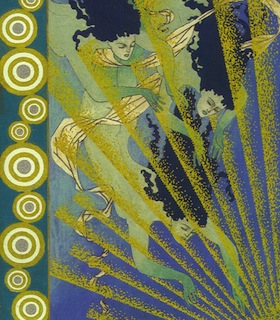
In Das Rheingold, the dwarf Alberich steals the magical Rhinegold from the river Rhine, and forges it into a ring giving its owner limitless power. But it comes at a price: the renunciation of love. When the king of the gods, Wotan, hears of the ring, he resolves to have it for himself. He steals the ring from Alberich, who places a curse on it — which quickly begins to be fulfilled.
Die Walküre
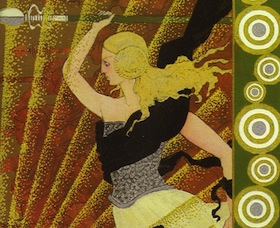
Die Walküre (The Valkyrie) centers around the children whom Wotan has fathered to further his plans to rule the world and regain the ring. In Act 1, two of those children, the twins Siegmund and Sieglinde, become lovers—to the outrage of the goddess Fricka.
The repercussions will not be happy ones for Wotan, who is forced by Fricka to withdraw his protection from Siegmund. When Wotan orders his beloved daughter Brünnhilde to carry out his wishes, she disobeys, and he is forced to part from her as well.
Siegfried
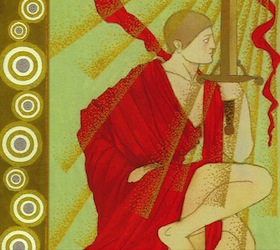
Though Wotan appears in Siegfried, he is now a weary observer of the world, not its master. The opera centers around Siegfried, the son of the two lovers Siegmund and Sieglinde. We see him forging a magic sword, slaying a dragon, regaining the ring, and finally winning Brünnhilde as his mate.
Götterdämmerung
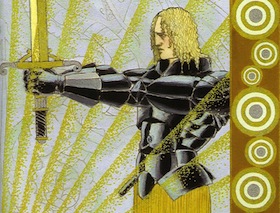
At the end of Siegfried, the happiness of Siegfried and Brünnhilde seemed assured. But in Götterdämmerung (Twilight of the Gods), we see them pulled into the same web of deceit and betrayal as the gods before them.
By the last scene, Siegfried has been killed by the evil Hagen. Brünnhilde joins him on his funeral pyre. The purifying flames consume the couple, and Valhalla itself.
The Recording
Enter to win this recording »
Purchase this set from Allegro Music »
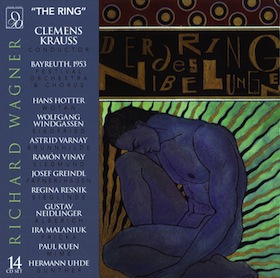
An acclaimed recording from the 1953 Bayreuth Festival, called by the New York Times "the best on records"
ConductorClemens Krauss
Bayreuth, 1953
Festival Chorus and Orchestra
Hans Hotter
Wotan
Wolfgang Windgassen
Siegfried
Astrid Varnay
Brünnhilde
Ramón Vinay
Siegmund
Josef Greindl
Fafner / Hagen
Regina Resnik
Sieglinde
Gustav Neidlinger
Alberich
Ira Malaniuk
Fricka
Paul Kuen
Mime
Hermann Uhde
Gunther
Purchase this set from Allegro Music